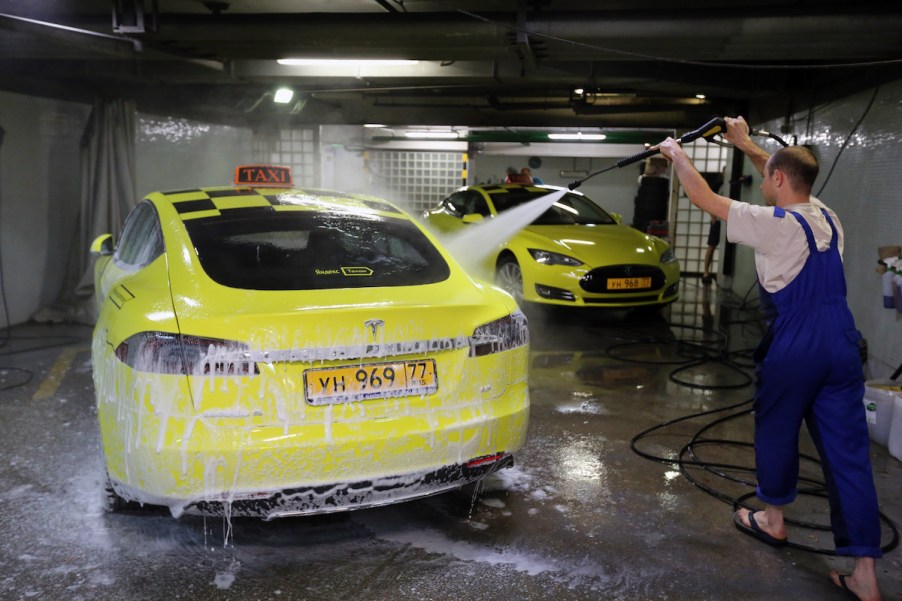
Is It Safe to Take an Electric Vehicle Through a Carwash?
Keeping your EV on the road requires regular maintenance. You top off the fluids, rotate the tires, and check the brakes. You also clean your car to preserve the paint. But is it safe to take an electric vehicle through a carwash?
Why people are concerned about taking an EV through a carwash

Electric vehicles are expensive, so owners want to ensure they aren’t damaging their EVs by driving them through a carwash. Plus, we’re always taught that water and electricity are a dangerous combination, so it makes sense that EV owners would be wary of carwashes.
Though the car’s body isn’t the problem, the question arises about the battery system. You usually wouldn’t expose the battery components to water because, in some cases, too much water can short out electric parts, especially if you’re dealing with salt water, like in a flood situation.
Replacing an EV battery could cost anywhere from around $3,000 to $15,000. The last thing you would want is to risk damaging the battery and its components without knowing whether sending your electric vehicle through a carwash would damage it. So, could you safely clean your electric vehicle at a carwash?
Is it safe for an electric vehicle to go through a carwash?
You’ll be relieved to know that taking an electric vehicle through a carwash is perfectly safe. It’s not all that different from driving your EV in the rain. Sure, a carwash has power jets that spray water at a higher velocity than rain, but your car will be OK if it gets wet.
The main reason why it’s safe to take your EV through a carwash is that automakers take steps to ensure their vehicles meet car safety requirements. One such measure is making the car essentially water-resistant. Although automobiles can’t withstand major floods, they can still take on a small amount of water, which could happen in real-life driving.
Manufacturers test their products rigorously before allowing their vehicles to be sold to consumers. If an electric vehicle can pass strict testing, it can handle a carwash that focuses the water onto the car’s exterior and not on the battery or its electrical components.
What about hybrids?
Hybrids are vehicles that run on a gas-powered engine and an electric motor. The car could run on both power sources simultaneously or only one of them at any given time. However, the electric motor alone can power the vehicle for only so long. Once its charge is up, the gas engine takes over.
Plug-in electric vehicles (PHEVs) work much like mild hybrids because they run on a combination of gas and electric motors. However, PHEVs, like EVs, need to be recharged through a power outlet, while mild hybrids recharge automatically through their regenerative braking systems or gasoline engines.
Both types of hybrids have electrical components similar to those in fully electric vehicles. So these vehicles are just as safe in the water as EVs, according to Driving Electric. This type of car goes through the same waterproof testing because manufacturers must meet certain safety requirements on all vehicles they produce.
EVs are great because they cost less to maintain and are better for the environment than internal combustion engine cars. And now that you know you won’t get electrocuted or destroy your electric vehicle at the carwash, you can drive even more confidently.


